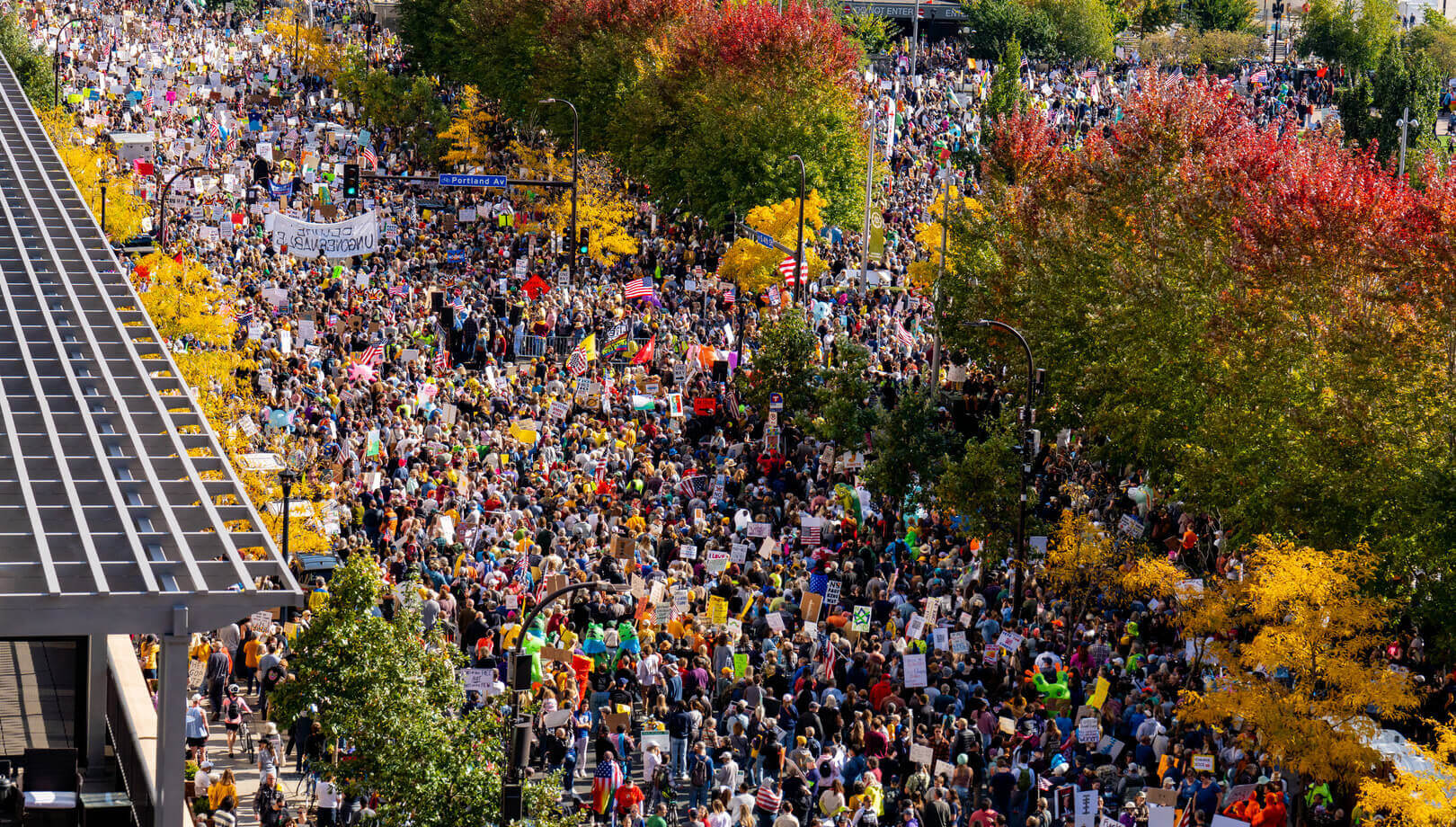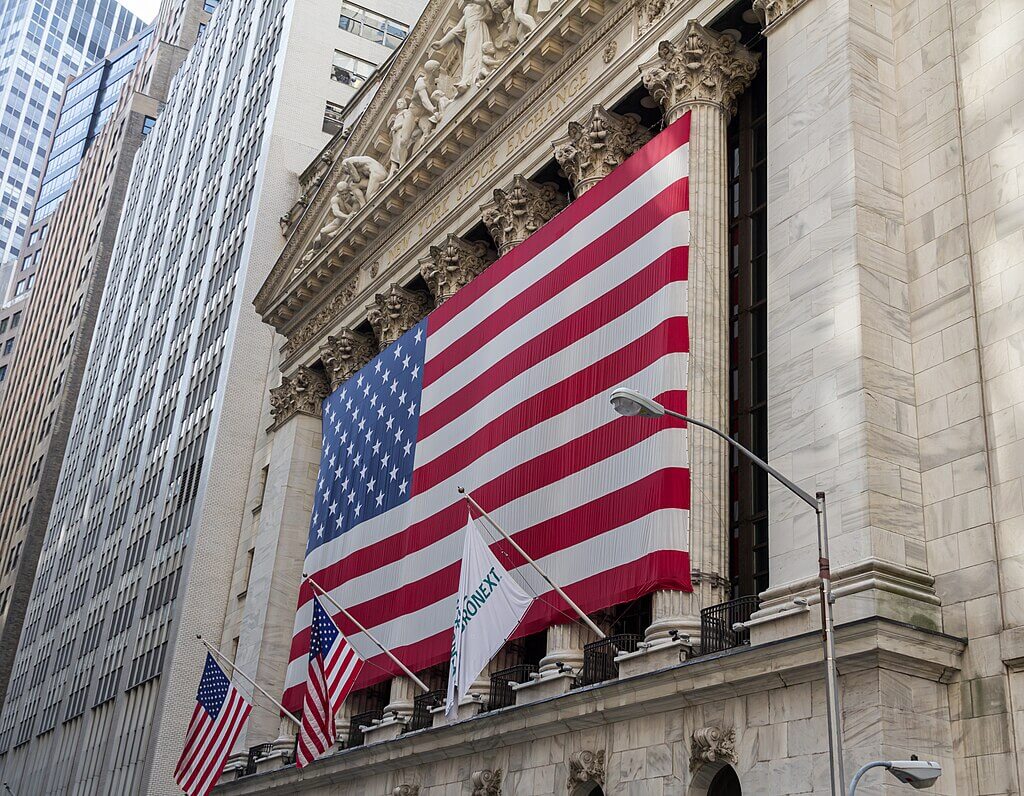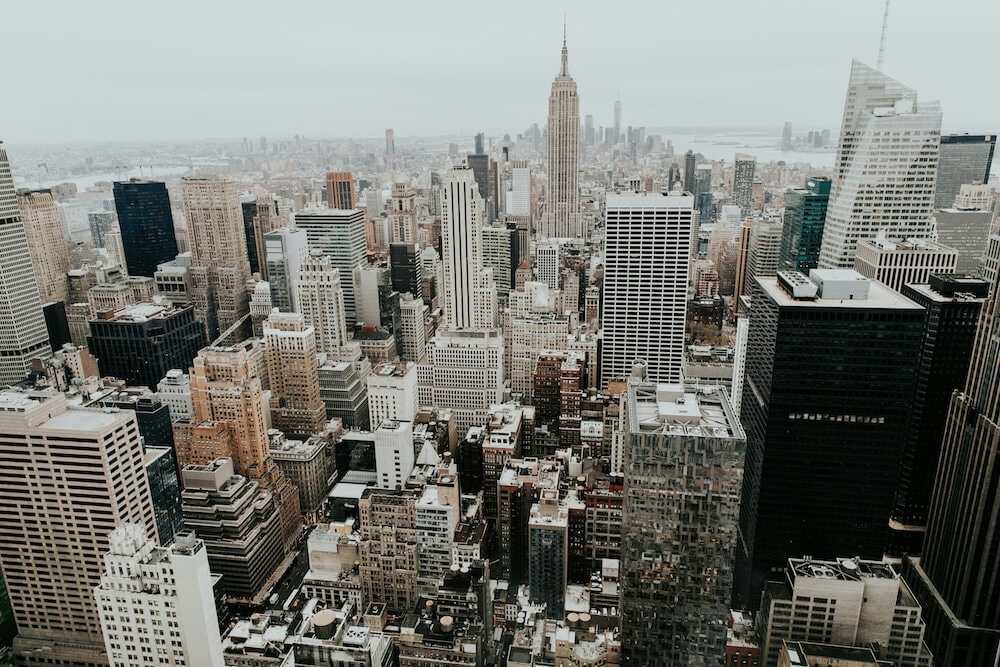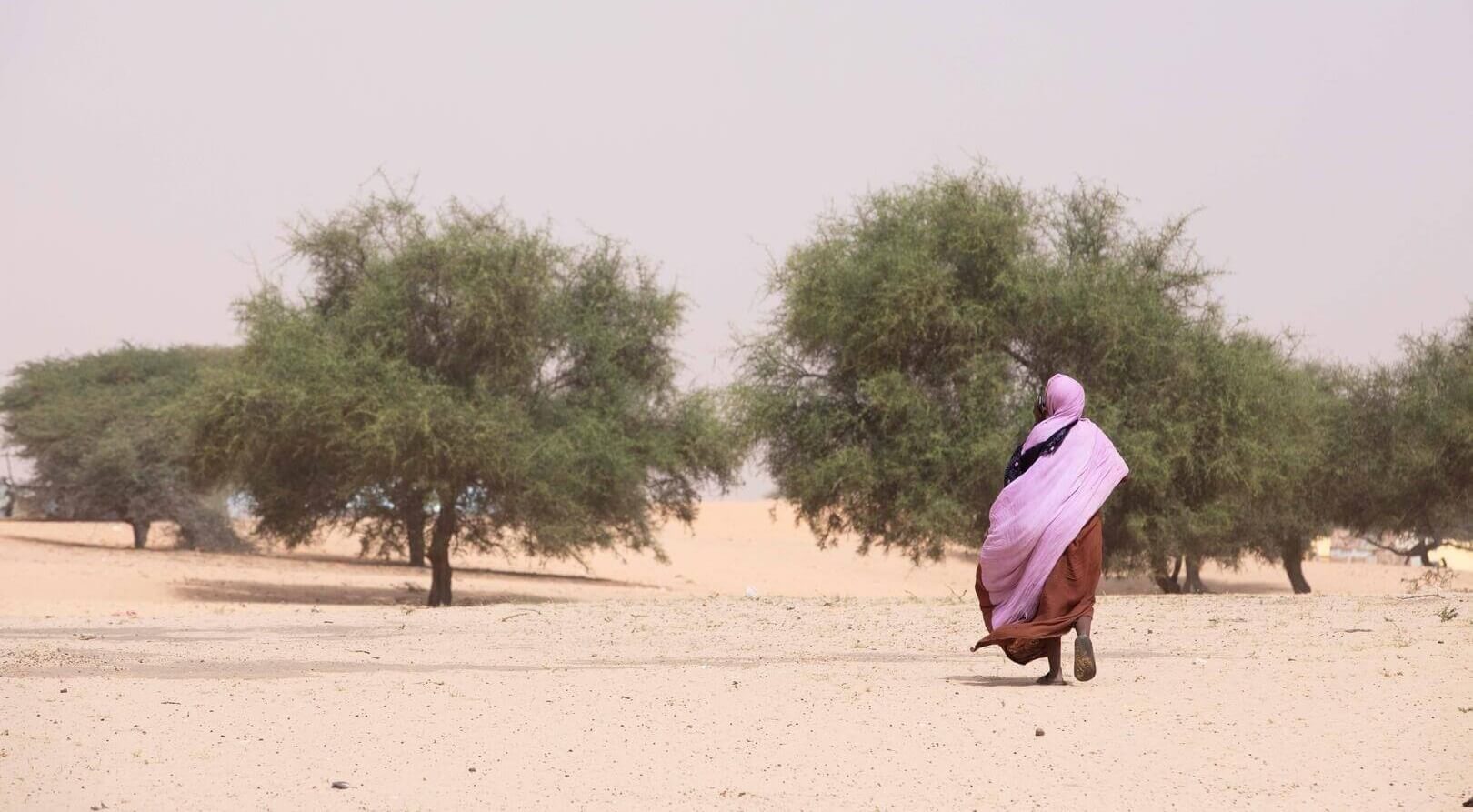The Sustainable Development Report 2023, written by independent experts from the United Nations Sustainable Development Solutions Network (SDSN) and released on June 21, provides an update on the global Sustainable Development Goals (SDG) progress at the midpoint of the 2030 Agenda.
The global implementation of the SDGs in 2023, the report finds, is falling behind schedule, with “none of the goals […] on track to be achieved globally by 2030.”
It’s important to mention that the report was released on June 21, just one day before the start of the Summit for a New Global Financing Pact in Paris. This was two months after the UN Secretary-General warned of the lack of progress on the SDGs.
“Halfway to the deadline for the 2030 Agenda, we are leaving more than half the world behind,” Guterres said on April 25, addressing UN member states in a briefing on his SDG Progress Report. Progress on 50 percent is weak and insufficient. Worst of all, we have stalled or gone into reverse on more than 30 percent of the SDGs.”
By the time political leaders and major institutional investors gathered at the Summit, it was widely known that there was a lack of progress on the SDGs. However, as shown in the report, initial steps were taken to address the issue. Nevertheless, there is still a lot that needs to be done, as the report demonstrates.
The 17 SDGs were established in 2015 as part of the 2030 Agenda for Sustainable Development. They provide a comprehensive framework to address the world’s most pressing challenges, including poverty, inequality, climate change, environmental degradation and biodiversity decline, and social injustice. Each of the 17 goal has a distinct set of concrete targets to be achieved by 2030.
📣 The 2023 #SustainableDevelopment Report is out!
What is the state of #SDGs at the midpoint of #Agenda2030, & where does your country rank?
Explore the data and read the full #SDR2023 now ➡️ https://t.co/4TYP2GNNNL pic.twitter.com/qLEy1UmKH2
— SDSN (@UNSDSN) June 21, 2023
The goals aim to promote sustainable development across three dimensions: economic, social, and environmental; they are interconnected and mutually reinforcing, and require collaborative efforts from all 193 UN member state governments, businesses, civil society organisations, and individuals to achieve their targets by 2030.
Sustainable Development Report 2023: Everything is Off Track?
At the current rate of progress, the UN report finds that none of the SDGs are on track to be achieved by 2030.
“Despite the world improving on average half a point per year on the SDG Index between 2015 and 2019 (which was already too slow) progress has stalled since the outbreak of the pandemic and the onset of other overlapping crises,” the report authors write.
In fact, the SDSN determined that in 2022, the world’s average SDG progress fell one full point below the projected level based on pre-pandemic trends.
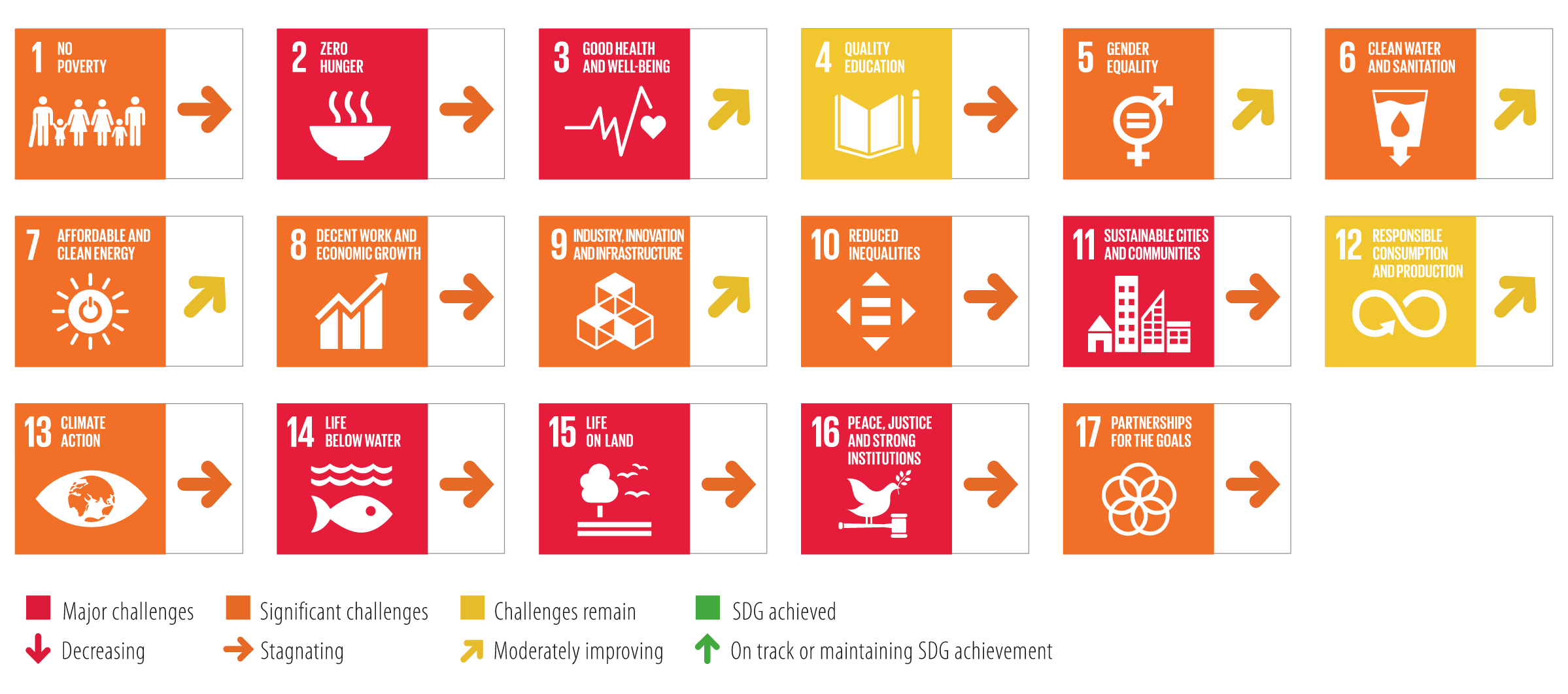
The UN report established that indicators such as subjective well-being, access to vaccination, poverty, and unemployment have experienced significant global reversals.
Furthermore, it found that goals related to hunger, sustainable diets, health, biodiversity, housing, strong institutions, pollution, and peaceful societies are off-track.
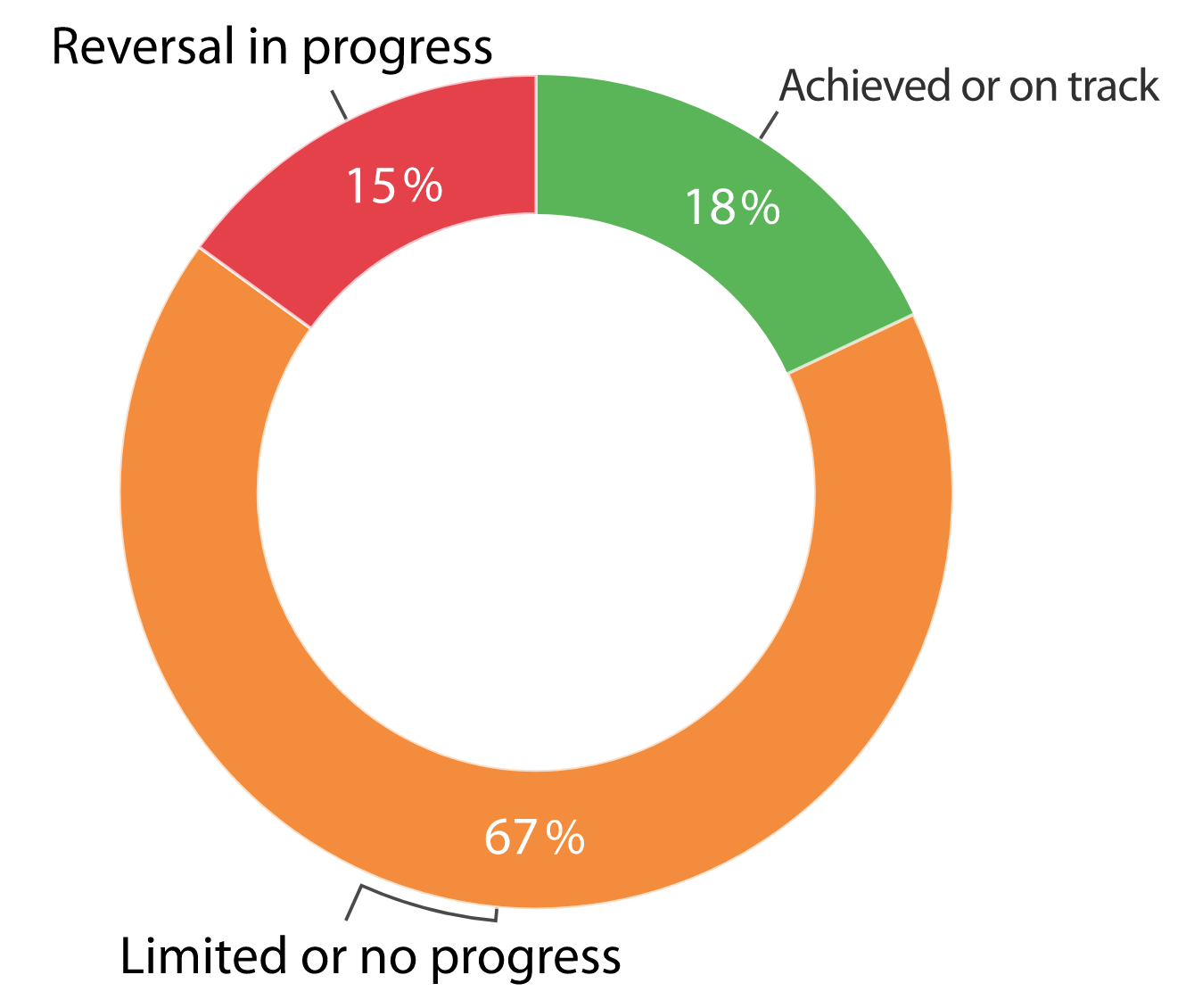
The study shows that only 18% of the SDGs are on track or have been achieved. Meanwhile, 15% of the goals are seeing a reversal in progress. Over two-thirds of the 17 goals are currently seeing “limited or no progress.”
These are deeply distressing figures. However, the report emphasises: “Despite this alarming development, the SDGs are still achievable. None of their objectives are beyond our reach. The world is off track, but that is all the more reason to double down on the SDGs.”
Disparities between High-Income and Low-Income Countries
One of the main points of concern the report highlights is the gap in SDG outcomes between high-income countries (HICs) and low-income countries (LICs). It concluded that the gap in SDG outcomes may be more prominent in 2030 than in 2015.
One of the reasons the SDSN outlines is the “chronic shortfall of international SDG financing” in developing and emerging economies.
In addition, the assessment shows that HICs generate negative international spillovers, particularly in the textiles and clothing sector.

The report also includes the first-ever pilot index of multilateralism, which measures countries’ efforts to promote global cooperation — a vital pillar of the UN and the achievement of the 2030 Agenda.
Argentina, Barbados, Chile, Germany, Jamaica and Seychelles were recognised for their efforts in promoting multilateralism. This said, as mentioned in the report, current global cooperation leaves room for improvement.
Positive Outcomes of the Sustainable Development Report 2023
The world has made significant improvements in specific sectors, which can be seen as a success in implementing the SDGs.
The 2023 analysis shows that since 2015, on average, the world has made “some progress” in enhancing access to vital infrastructure, particularly under SDG 6 (Clean Water and Sanitation), SDG 7 (Affordable and Clean Energy), and SDG 9 (Industry, Innovation, and Infrastructure).
Related Articles: A Short History Of The SDGs | The huge potential role of BRICS in achieving the 2030 Agenda | IMPAKTER ESSAY: The Unlikely Journey to the 2030 Agenda for Sustainable Development | 42 Years Needed to Achieve the 2030 Agenda: Asia-Pacific Progress Report
However, the report stresses that this “varies extensively across countries, and the world average remains too slow to achieve these SDGs globally by 2030.”
Individually, many European countries — including Denmark, Czechia, Estonia, Latvia, and the Slovak Republic — have managed to achieve “or are on track to achieving” most targets.
Lebanon, Yemen, Papua New Guinea, Venezuela, and Myanmar, on the other hand, have the highest number of SDG targets that are reversing in progress.
Solutions Offered by the Sustainable Development Report 2023
The report stressed that at their core, the SDGs are an “investment agenda,” and it would need an “overhaul” of the Global Financial Architecture (GFA) to tackle the existing limitations in funding and investment.
A six-point plan for a GFA reform was proposed by the SDSN, which includes increasing funding, revising financial systems, and establishing sustainable finance criteria to support SDG investments.
Additionally, it requires aligning private business investments with the SDGs while also reforming institutional frameworks for improved international cooperation and progress monitoring.
Most importantly, the report urges all countries to self-evaluate their SDG efforts, stating: “All countries, poorer and richer alike, should use the half-way momentum to self-critically review and revise their national SDG strategies and commit to strengthening multilateralism.”
The SDG Summit is only in September, but we are actively preparing for this big event!
➡️ Check out our latest newsletter with the latest updates: https://t.co/vFi5BlHMtr
➡️ Join our mailing list: https://t.co/SHcy49Paaw pic.twitter.com/W6vzi4lGFP
— UN DESA Sustainable Development (@SustDev) April 6, 2023
In advance of the Summit for a New Global Financing Pact in Paris, Professor Jeffrey Sachs, President of the SDSN and a lead author of the 2023 report, said:
“Half way to 2030, the SDGs are seriously off track – with the poor and highly vulnerable countries suffering the most. The international community should step up at this month’s Summit for a New Global Financing Pact in Paris, held on June 22 and 23, and at the key upcoming multilateral meetings, including the G20 meeting in New Delhi, the SDG Summit New York in September, and COP28 in Dubai, to scale-up international financial flows based on SDG needs. It would be unconscionable for the world to miss this opportunity, especially for the richest countries to evade their responsibilities. The SDGs remain fundamental for the future we want.”
The Paris Summit resulted in the creation of a “Road Map” to guide future climate-related events and meetings, while also showcasing progress in fulfilling previous commitments, such as the $100 billion per year to assist developing countries in addressing climate change.
Additionally, there was a breakthrough in the restructuring of Zambia’s bilateral debt, providing some relief to the country’s overall debt burden.
Yet, the summit didn’t deliver as much progress as some were hoping for and left the underlying obstacles hindering developing countries’ investment in development and climate initiatives largely unaddressed.
In September this year, world leaders will meet at the SDG Summit in New York to discuss a “rescue plan” for the SDGs. Like the 2023 UN report, the summit will mark the halfway point to the 2030 deadline and, as UN Chief Antióno Guterres stated, “must be a moment of unity to provide a renewed impetus and accelerated actions for reaching the SDGs.”
Editor’s Note: The opinions expressed here by the authors are their own, not those of Impakter.com — In the Featured Photo: High Level Thematic Debate on Achieving the Sustainable Development Goals (SDG’s) on 21 April 2016 in New York – UN HQ. Featured Photo Credit: UNDP/Freya Morales.




